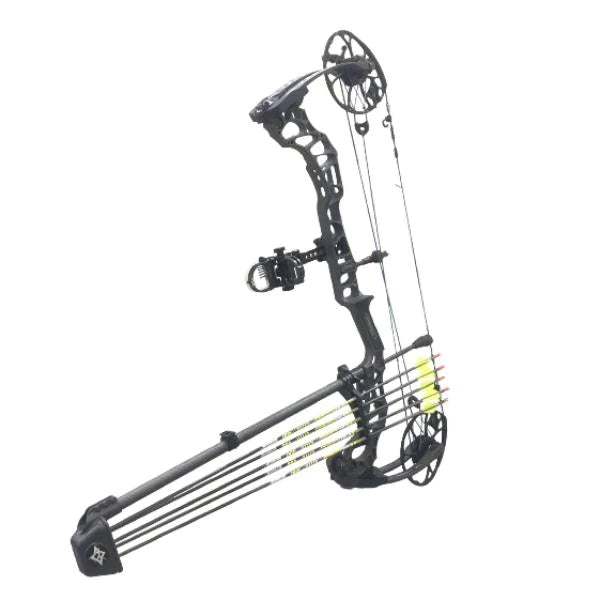Maximizing Your Archery Efficiency With the Right Substance Bow Stabilizer: a Detailed Summary
In the world of consistency, precision and archery are paramount to accomplishing ideal performance. One often-overlooked yet vital part in improving precision is the compound bow stabilizer. This simple device plays a substantial role in steadying your objective, lowering bow torque, and soaking up vibrations. Nevertheless, the efficiency of a stabilizer rests on different factors, including positioning, layout, and weight. By comprehending the nuances of selecting and enhancing a substance bow stabilizer, archers can fine-tune their devices to boost their shooting experience to new degrees of effectiveness and control.
Significance of Bow Stabilizers in Archery

Furthermore, bow stabilizers aid in balancing the weight circulation of the bow, which can improve the archer's stability while firing and aiming. By adding weight to the front of the bow, stabilizers can minimize the quantity of torque experienced upon launch, leading to a smoother and a lot more regulated shot - compound bow stabilizer. This weight circulation additionally helps in holding the bow steady for a longer duration, enabling the archer to intend more properly
Kinds Of Substance Bow Stabilizers
When thinking about the numerous types of substance bow stabilizers readily available, it is necessary to understand their unique features and functions to establish one of the most appropriate alternative for making the most of archery efficiency. The most usual kinds of substance bow stabilizers include sidebar stabilizers, front stabilizers, and back stabilizers. Sidebar stabilizers affix to the sides of the riser and aid in stabilizing the bow during the aiming procedure. Front stabilizers, also called lengthy poles, are affixed to the front of the riser and aid in taking in and reducing any type of vibrations caused by the release of the arrow, thus enhancing precision. Back stabilizers, also called rear stabilizers, are mounted to the back of the bow and help in reversing the weight of various other devices, resulting in boosted security and consistent aiming. Furthermore, some stabilizers feature adjustable weights that permit archers to adjust the balance and feeling of their bows according to visit this web-site their choices, making them flexible choices for archery fanatics of all levels.
Aspects to Take Into Consideration When Choosing
In examining substance bow stabilizers, recognizing the unique functions and features of each type is important for making an informed decision on the most suitable option to improve archery performance. When choosing a stabilizer, one have to consider the weight of the stabilizer itself. While a heavier stabilizer can offer more stability by reducing the bow's motion, it may likewise cause fatigue during long shooting sessions. Balance is one more crucial factor to ponder. The stabilizer's size and layout significantly impact the bow's equilibrium, influencing the shooter's capacity to hold steady purpose. In addition, the material of the stabilizer can affect its effectiveness. Carbon fiber stabilizers are light-weight and soak up vibrations well, boosting precision. The number and adjustability of dampeners on the stabilizer can fine-tune its performance by minimizing sound and shock upon launch. By carefully assessing these elements, archers can select a substance bow stabilizer that lines up with their shooting style and maximizes their overall web performance on the archery variety.
Installation and Modification Tips
For ideal performance and precision in archery, understanding the installment and change of your bow stabilizer is important. Correct installation begins with connecting the stabilizer to the bow's riser, ensuring it is strongly secured.
When adjusting the stabilizer, begin with little step-by-step modifications rather than radical adjustments. Pay focus to just how the bow responds to modifications in stabilizer setups and make adjustments as necessary. On a regular basis examine the stabilizer's tightness and overall condition to guarantee it proceeds to work optimally.
Maintenance and Care Standards

It is likewise important to store your bow with the stabilizer in a safe and risk-free location when not in use. Adhering to these maintenance and treatment guidelines will help you obtain the most out of your bow stabilizer and enhance your total archery performance.
Conclusion
Finally, selecting the appropriate compound bow see this website stabilizer is vital for making best use of archery efficiency. Recognizing the value, kinds, variables to think about, installation and modification pointers, in addition to upkeep and treatment standards can greatly influence one's accuracy and consistency in capturing. By selecting a stabilizer that matches specific needs and choices, archers can enhance their total performance and accomplish far better outcomes on the variety or in competition.
Bow stabilizers play a crucial function in boosting an archer's accuracy and consistency by minimizing vibrations and supporting the bow during the release of an arrowhead - compound bow stabilizer.In addition, bow stabilizers help in balancing the weight circulation of the bow, which can improve the archer's stability while intending and shooting. The most usual types of compound bow stabilizers consist of sidebar stabilizers, front stabilizers, and back stabilizers. Back stabilizers, additionally called rear stabilizers, are placed to the back of the bow and aid in counterbalancing the weight of other devices, resulting in boosted stability and constant aiming. When selecting a stabilizer, one have to consider the weight of the stabilizer itself